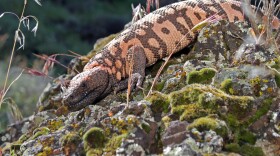-
Deer, elk and fish face food scarcity, death and poor water quality after a wildfire has burned its course.
-
Anyone over 18 now has to buy a hunting or fishing license to hike, bike or even bird watch at 25 Wildlife or Waterfowl Management Areas in Northern Utah.
-
Research from the U.S. Geological Survey points to a shift in climate niches. As Utah warms, several species of snakes and lizards could find more comfortable spots in the state to move into.
-
As the wildfire approached Blubber Creek near Bryce Canyon National Park, nearly 100 native Bonneville cutthroat trout were caught with nets and hauled out of harm’s way.
-
Working with rattlesnakes isn’t a career choice that would entice many, but for Camp Williams wildlife biologist Chris Frauenhofer, it’s a personal passion and he makes a living doing it.
-
“For a long time, we've had bounties and government agents out after them, trying to kill them. It never works,” one researcher said, describing the coyote’s resilience to hunting.
-
The Temple of Sinawava dam, built in 1957, kept native fish like flannelmouth suckers pinned downstream on the Virgin River.
-
Because a lot of water from the San Rafael River gets used upstream, more of its path through southeast Utah is drying up. That’s transforming the river’s flow patterns and leaving native fish stranded. But scientists are testing ways to give them a better chance at survival.
-
The Biden administration is keeping protections in place for more than 2,000 grizzly bears in western states despite requests to lift the safeguards. The fearsome bruins have been federally protected since 1975 as a threatened species.
-
Hunting, a series of harsh summers and severe winters and population transfers have led to a decline in mountain goats on Willard Peak and Ben Lomond north of North Ogden.
-
Wild horse advocates are frustrated they can’t bring dehydrated horses water, but the BLM says that would do more harm than good.
-
The U.S. Fish and Wildlife Service officials announced Friday that it has rejected petitions from environmental groups to add wolves in the northern Rockies and parts of the western U.S. to the Endangered Species List.
Play Live Radio
Next Up:
0:00
0:00
Available On Air Stations












